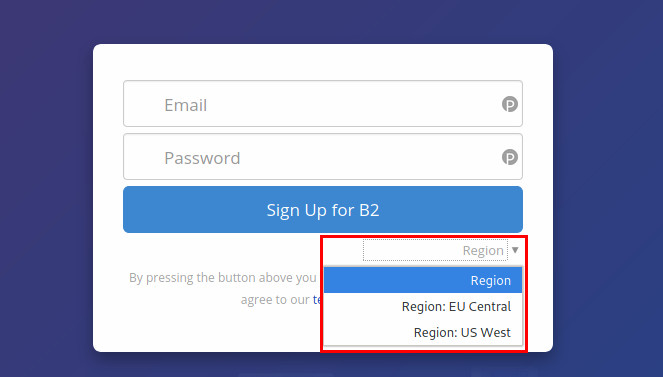backupToB2.sh


To ensure data integrity, we first will set NextCloud into Maintenance Mode. This ensures that nobody is working actively on NextCloud and reduces the risk of corrupt backups. Rekordbox licence. Cd /var/www/nextcloud sudo -u www-data php occ maintenance:mode -on Step 2 – Mounting the Backup Server. Download mascom card reader driver. On your NextCloudServer create a new directory. NextCloud & BackBlaze B2 secure backup script / howto I wanted to share my backup script with everyone. This is a script that enables maintenance mode, syncs to Backblaze B2 all of your files (encrypted by NextCloud), all of your encryption keys (enclosed in a tarball encrypted by a separate GPG key) and SQL dumps (also encrypted with that GPG.

| #!/bin/sh |
| # NextCloud to BackBlaze B2 Backup Script |
| # Author: Autoize (autoize.com) |
| # This script creates an incremental backup of your NextCloud instance at BackBlaze's off-site location. |
| # BackBlaze B2 is an object storage service that is much less expensive than using Amazon S3 for the same purpose, with similar versioning and lifecycle management features. |
| # Uploads are free, and storage costs only $0.005/GB/month compared to S3's $0.022/GB/month. |
| # Requirements |
| # - BackBlaze B2 account (10 GB Free) - Create one at https://www.backblaze.com/b2/sign-up.html |
| # - Python 3.x and Python PIP - sudo apt-get install python3 && wget https://bootstrap.pypa.io/get-pip.py && sudo python3 get-pip.py |
| # - BackBlaze B2 CLI installed from PyPI - sudo pip install b2 |
| # Instructions |
| # 1. Insert the following line in your NextCloud config.php file above the ); to move the cache above each user's data directory. |
| # If /media/external/CloudDATA is not your data directory, substitute the relevant directory before /cache. |
| # 'cache_path' => '/media/external/CloudDATA/cache', |
| # 2. Create a bucket and obtain your Account ID and Application Key from your B2 account. |
| # 3. Authenticate your CLI using the b2 authorize_account command. |
| # 4. Save this script to a safe directory such as /srv/backupToB2.sh and make it executable with the following command. |
| # sudo chmod +x backupToB2.sh |
| # 5. This script must be run as root. To run a backup now: |
| # sudo ./backupToB2.sh |
| # 6. Set up a cron job to run this backup on a predefined schedule (optional). |
| # sudo crontab -u root -e |
| # Add the following line to the crontab to conduct a weekly backup every Saturday at 2:00am. |
| # 0 2 * * sat root sh /srv/backupToB2.sh > /srv/backupToB2.log |
| # Save, quit and check that the crontab has been installed using the following command. |
| # sudo crontab -u root -l |
| # Name of BackBlaze B2 Bucket |
| b2_bucket='b2_bucket_name' |
| # Path to NextCloud installation |
| nextcloud_dir='/var/www/nextcloud' |
| # Path to NextCloud data directory |
| data_dir='/media/external/CloudDATA' |
| # MySQL/MariaDB Database credentials |
| db_host='localhost' |
| db_user='nextclouduser' |
| db_pass='secret' |
| db_name='nextcloud' |
| # Check if running as root |
| if [ '$(id -u)'!='0' ];then |
| echo'This script must be run as root'1>&2 |
| exit 1 |
| fi |
| echo'Started' |
| date +'%a %b %e %H:%M:%S %Z %Y' |
| # Put NextCloud into maintenance mode. |
| # This ensures consistency between the database and data directory. |
| sudo -u www-data php $nextcloud_dir/occ maintenance:mode --on |
| # Dump database and backup to B2 |
| mysqldump --single-transaction -h$db_host -u$db_user -p$db_pass$db_name> nextcloud.sql |
| b2 upload_file $b2_bucket nextcloud.sql NextCloudDB/nextcloud.sql |
| rm nextcloud.sql |
| # Sync data to B2, then disable maintenance mode |
| # NextCloud will be unavailable during the sync. This will take a while if you added much data since your last backup. |
| # If /media/external/CloudDATA is not your data directory, modify the --excludeRegex flag accordingly, which excludes the NC cache from getting synced to B2. |
| b2 sync --excludeRegex '/media/external/CloudDATA/cache/.*'$data_dir b2://$b2_bucket$data_dir |
| sudo -u www-data php $nextcloud_dir/occ maintenance:mode --off |
| date +'%a %b %e %H:%M:%S %Z %Y' |
| echo'Finished' |
Nextcloud Backblaze B2
Sign up for freeto join this conversation on GitHub. Already have an account? Sign in to comment
